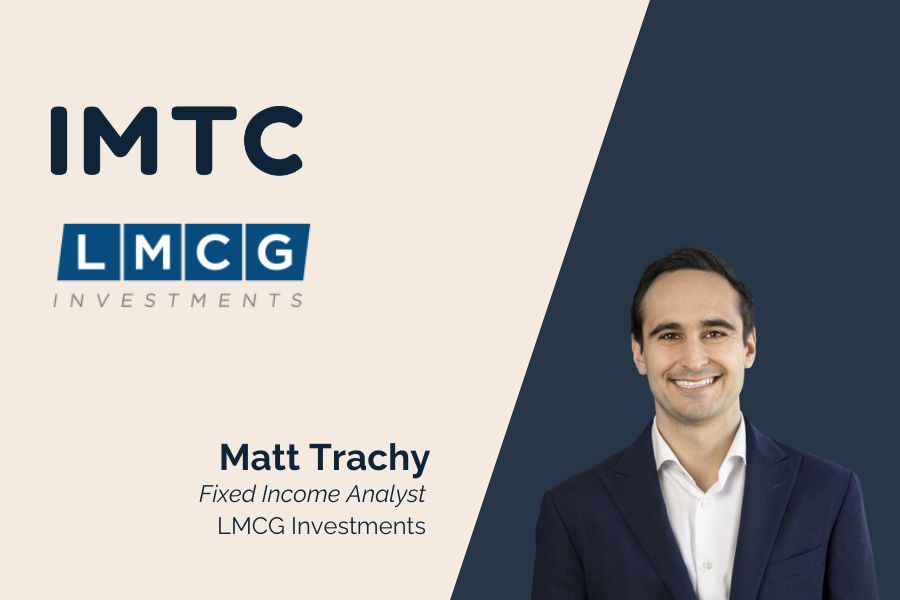Spotlight Series: Kevin Bliss on Data, Customization, and the Future of Fixed Income Technology

Q: Kevin, could you introduce yourself and share what drew you to IMTC?
Kevin Bliss: My name is Kevin Bliss, and I’m a Client Specialist at IMTC. Before joining, I spent nearly 20 years as a fixed income portfolio manager, managing highly customized institutional mandates.
Over the course of my career, I was involved in four major platform onboardings, often spearheading the implementation. I became obsessed with data quality and process clarity, because I’ve always believed that good data in leads to better results. Fixed income is data-heavy, and most systems I used lacked flexibility—so many of us managed billion-dollar mandates in Excel. While Excel is flexible, it’s risky and error-prone.
Many years ago, when I connected with Russell (our co-founder), he invited me to explore what IMTC was building. We quickly saw that while individual investors weren’t eager to manage bonds themselves, wealth managers and institutions badly needed a modern replacement for legacy systems. That vision drew me to IMTC.
Q: What’s the biggest change you’ve seen in fixed income portfolio management during your career?
Kevin Bliss: Customization has expanded dramatically. What used to be the domain of institutional clients is now available to wealthy individuals—and even to retail investors at relatively low asset levels. Minimums have come down, and technology like IMTC’s has made it possible to deliver bespoke fixed income portfolios at scale.
This has unlocked tremendous opportunities for wealth managers to offer personalization without being constrained by mandate size.
Q: And what persistent challenges are asset and wealth managers still facing today?
Kevin Bliss: It still comes down to data. High-quality inputs are the foundation of trust in tools like optimizers. If the trade data, cash balances, pricing, or terms are off—even slightly—it undermines decision-making.
Fixed income carries exponentially more data points than equities, and managers remain limited by legacy providers and fragmented systems. A single missing price or inaccurate balance can throw everything off. At IMTC, we’re focused on enhancing data quality so managers can confidently rely on the platform’s outputs.
Q: How did your past experience as a portfolio manager inform the problems IMTC is solving now?
Kevin Bliss: Having been in the client’s seat helps me recognize what information portfolio managers need at different points in the workflow.
Rather than teaching users “button clicks,” we design entire workflows—from identifying portfolios needing attention, to generating ideas, running compliance checks, sending trades, and maintaining intraday accuracy. Our goal is to keep everything in one system with straight-through processing, so managers feel in control from start to finish.
We’ve distilled daily practices into three to five core workflows, which we then customize for each client. It’s about replicating how managers actually work—not forcing them to adapt to rigid systems.
Q: Can you share a story about a workflow pain point that IMTC now solves?
Kevin Bliss: Many managers build model portfolios as their “best ideas.” Historically, applying those models across hundreds or thousands of accounts was cumbersome.
Today, IMTC’s “relative to” functionality allows managers to set an index or model as the benchmark, and our optimizer aligns portfolios accordingly. With validated inputs and buy lists, the system helps keep strategies tightly aligned.
Clients tell us the platform saves them two to three hours a day. That time savings lets them focus on more meaningful work—research, client conversations, and business development.
Q: What transformations do clients experience when they modernize with IMTC?
Kevin Bliss: Confidence and flexibility. Before, some managers limited trading activity because they weren’t sure how intraday changes would impact their portfolios. With IMTC, they have real-time clarity.
Now, managers who traded once or twice a day are comfortable trading throughout the day—even late in the afternoon—because they know the data in front of them is accurate. That gives them freedom to act when opportunities arise.
Q: Any memorable client “aha moments” or feedback?
Kevin Bliss: Time savings is the big one. Clients often say, “That used to take me four hours, and now it takes 10 minutes.”
Another frequent reaction is surprise at how much data and analytics are already built into the platform. Some clients who don’t have access to expensive third-party tools are amazed at the level of customization and depth we provide. We often hear, “You’ve thought of everything”—and while we haven’t yet, we’re continuously improving based on client feedback.
Q: Looking ahead, what trends will shape fixed income technology over the next five years?
Kevin Bliss: I think we’ll still be dealing with legacy data providers, but the industry will evolve to work around their limitations. Automation—not necessarily traditional AI, but smart automation—will be key.
The future is a system that brings issues to the manager’s attention automatically, rather than requiring them to dig for problems. If we’re saving clients two to three hours today, I expect we’ll be saving four to five hours a day within five years. That time can then be reinvested into client engagement, research, and strategy.
Q: Finally, what advice would you give PMs and CIOs beginning their digitization journey?
Kevin Bliss: Don’t just try to replicate your current process in new technology. Be open to rethinking workflows.
Your investment philosophy—the “secret sauce”—remains yours. But systems like IMTC can make workflows far more efficient. The clients who gain the most are those who embrace new ways of working instead of bending the technology back toward old habits.





